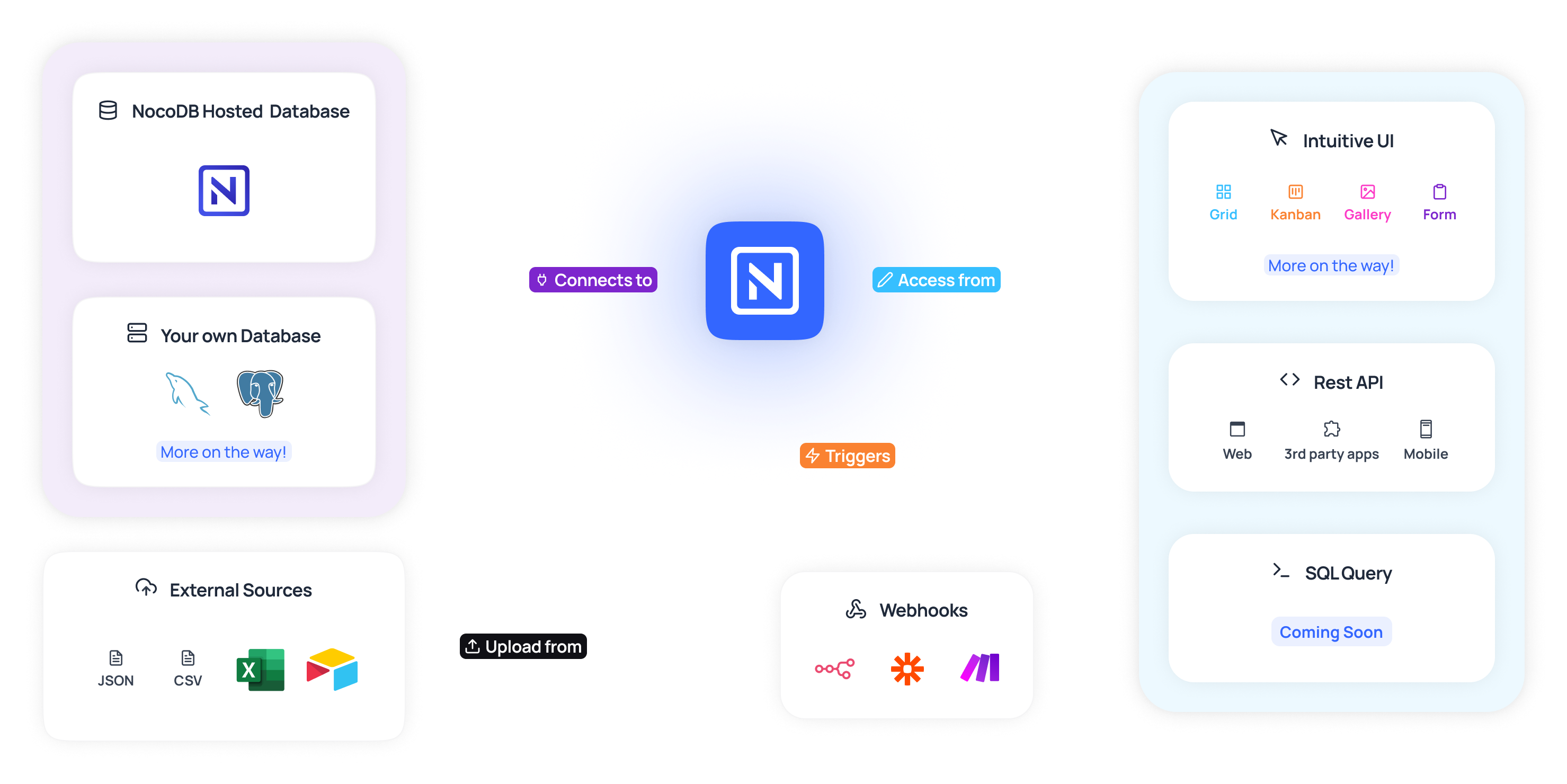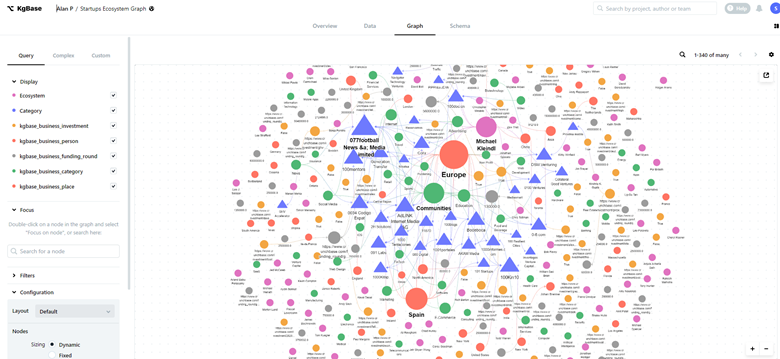Just How No-Code Devices Simplify Open System Database Creation for Every Person
Just How No-Code Devices Simplify Open System Database Creation for Every Person
Blog Article
Exploring the Advantages of Scalable Databases That Need No Coding Abilities for Reliable Data Monitoring Solutions
The development of scalable data sources that eliminate the requirement for coding skills provides a transformative opportunity for organizations looking for reliable data monitoring options. As we think about the implications of such innovations, it ends up being essential to check out how they can improve the landscape of information management and drive sustainable growth in a competitive atmosphere.
Boosted Accessibility for Individuals
Improved accessibility for customers is an essential facet of scalable databases, guaranteeing that data monitoring systems are user-friendly and straightforward. In an era where data-driven decisions are critical, availability enables a wider series of users, consisting of those without comprehensive technical competence, to engage with database systems efficiently. This democratization of information access promotes boosted partnership across divisions, equipping employees to make and remove understandings educated choices.
Straightforward interfaces, such as drag-and-drop attributes and visual data representation, streamline complex information interactions. These enhancements decrease the learning curve connected with conventional database administration, allowing customers to concentrate on leveraging data instead than facing technological complexities. Moreover, scalable databases frequently include real-time analytics and customizable dashboards, giving customers with immediate insights customized to their specific needs.

Cost-Effectiveness and Source Cost Savings
Reliable data monitoring not just depends upon availability but also on cost-effectiveness and source cost savings. Scalable data sources made for users without coding abilities dramatically lower financial burdens commonly connected with conventional database monitoring systems. By eliminating the demand for specialized programs competence, companies can assign their resources much more effectively, concentrating funds on core business tasks as opposed to comprehensive training or employing knowledgeable personnel.
Additionally, these data sources typically use cloud-based remedies, which further minimize costs associated with equipment and upkeep. Organizations can scale their data source solutions according to their demands, staying clear of the expenditures incurred from over-provisioning resources. This versatility implies services can adapt to changing demands without sustaining unneeded expenses, leading to substantial lasting cost savings.
Furthermore, user-friendly user interfaces streamline information entry and monitoring procedures, lowering the moment invested in administrative tasks. This performance converts right into labor price savings, allowing teams to concentrate on strategic campaigns as opposed to routine upkeep. In general, taking on scalable data sources that need no coding skills fosters a more cost-effective strategy to data monitoring, making it possible for organizations to optimize their sources while maintaining high degrees of functional effectiveness.
Improved Partnership Throughout Teams

Moreover, scalable databases help with smooth interaction among employee. With straightforward interfaces that call for no coding skills, employees can quickly produce, change, and share records or dashboards tailored to their particular needs. This democratization of data equips non-technical users to contribute insights, improving the collaborative setting.
Furthermore, these data sources support concurrent access, allowing multiple individuals to work with the same dataset all at once. This feature enhances performance, as groups can engage in joint data analysis without the danger of variation control concerns. The ability to leave notes or remarks straight within the database further advertises discussion and clarifies information interpretations.
Streamlined Information Monitoring Processes
In today's data-driven environment, companies recognize the need of structured information administration the original source processes to make the most of performance and precision. By leveraging scalable databases that call for no coding skills, services can simplify their data handling and reduce the intricacies normally associated with conventional database systems. This ease of access equips non-technical customers to engage directly with data, helping with quicker decision-making and decreasing dependence on specialized IT workers.
Structured information administration procedures boost workflow by automating regular jobs such as information entrance, validation, and reporting. Automated data combination makes sure that details from numerous sources is aggregated perfectly, getting rid of silos and fostering a linked sight of critical company metrics (no-code). Furthermore, easy to use interfaces allow employees to manipulate information quickly, allowing them to create understandings that drive calculated campaigns without the demand for substantial training.
This effectiveness not just accelerates functional processes but additionally minimizes the capacity for human mistake, making sure that data remains precise and trustworthy. Eventually, streamlined data administration procedures via scalable data sources result in improved efficiency, permitting organizations to focus on core activities while ensuring that their data management techniques are effective and efficient.
Scalability for Growing Businesses

For broadening enterprises, the ability to scale up or down is vital. A scalable database can handle an increase of data produced from brand-new consumers, items, or services, making sure that organization operations stay uninterrupted. Furthermore, these databases supply the ability to manage peak loads successfully, which is essential throughout durations of quick growth or seasonal spikes.
In addition, many scalable data source solutions are developed with easy to use interfaces that call for no coding skills, encouraging non-technical staff to handle data successfully (no-code). This democratization of information administration allows companies to assign resources strategically and lower dependency on specialized IT employees
Ultimately, embracing a scalable data source not only enhances operational performance however likewise fosters a setting where services can advance and introduce without the restrictions of conventional database systems. This versatility settings organizations for long-lasting success in today's competitive landscape.
Verdict
In final thought, scalable databases that need no coding skills give considerable benefits for efficient data management. By improving information management processes and using scalability for expanding services, such options make it possible for companies to adapt to changing demands properly.
Improved accessibility for individuals is a critical facet of scalable data sources, ensuring that data management systems Going Here are instinctive and user-friendly.Easy to use user interfaces, such as visual information and drag-and-drop features representation, streamline complex information interactions. In general, taking on scalable databases that call for no coding skills fosters an extra economical approach to data monitoring, making it possible for organizations to optimize their sources while keeping high levels of functional performance.
By leveraging scalable data sources that need no coding abilities, businesses can streamline their data handling and lower the intricacies generally linked with traditional database systems - no-code.Streamlined data management procedures improve process by automating routine tasks such as data access, recognition, and reporting
Report this page